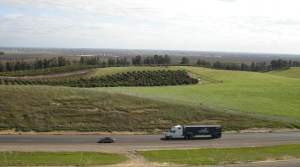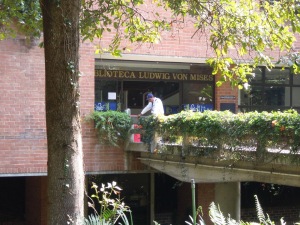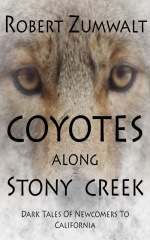
East Bay Hills
It’s 1898, the eve of the Spanish-American War and a time of explosive immigration to the United States. The Panic of 1892 has rocked the foundations of the Gilded Age and shock waves still roil through a fragile economy. In a welcome diversion, Willie Hearst’s New York Morning Journal is ratcheting up sentiment against an evil Spain, and Teddy Roosevelt’s splendid little war is about to get underway.
Jeremy Alvarez is a fatherless seventeen-year-old who’s grown up in his mother’s boarding house in Manhattan. He finds himself on a train with his family heading west to California to visit a dying grandfather he’s never seen. Jeremy is crossing the continent for the first time, and he’s hungry for knowledge of his mother’s ancestral valley east of San Francisco. This is where his grandfather greeted the Americans in 1846 — men of Manifest Destiny who stole his land, and eventually his self-respect.
The California that Jeremy finds is much different from the melting pot of his Manhattan that has gathered the world’s cultures and stacked them like cord wood with no alternative but to coexist. California has the elbow room for prejudice and a tradition of putting Indians, Chinese, and Mexicans in their place.
Jeremy Alvarez is a character in my novel-in-progress, but the subject of unwelcome foreigners is as old as my state that was once a Department of Mexico. A story about Jeremy’s family is told in an earlier novel, An Unseemly Reliquary. Both stories are fiction, of course, but reflect the state’s culture during the Gilded Age.
*****

Central Valley Beyond Interstate 5
In the 21st century a son of California, Victor Davis Hanson, writes in National Review Online of his beleaguered Central Valley. It is no longer prosperous or white, his farm in Fresno County a witness to impoverished and segregated communities. His childhood elementary school has become “94 percent Hispanic.” He decries the depressed farming conditions, the shift to corporate agribusiness, and laments how the family farm is all but extinct.
His “Third World” slice of California survives on welfare cash cards and the underground economy. But late-model cars and iPhones are not in short supply, providing a run-up to his plaintive question: “Does the $40 million a day supplement to unemployment benefits from Washington explain some of this.”
Mr. Hanson suggests the cause for this decline is illegal immigration, wrong-thinking ecologists, capricious water allocation, ethnic studies programs that preach a “fuzzy American culpability,” and a welfare system gone wild. He is speaking to his choir and his words say as much about the conservative culture that nurtured him as the opinions themselves. His opinions reflect a philosophy, not the facts.
He’s right that the abysmal conditions he describes can be attributed to the body politic, but not, I think, in the way he’d like us to think. The Central Valley farmers enjoy government giveaways that render any welfare or unemployment benefits to individuals insignificant. It is socialized (or government assisted) farming on a grand scale that has seen wealth transferred from public assets to private hands for generations in the form of nineteenth-century land giveaways, subsidized water, and the occasional crop subsidy — all gifts from Washington and Sacramento.
Drive along Interstate 5, these days, and you will see signs reminiscent of the old Burma Shave boards. They say “Congress created dust bowl” and “Food grows where water flows.” What is NOT said is that this water in question, like any welfare scenario, has been taken from the water-rich areas of the state to give to the water-poor areas of the state, transported through a world-class system of dams, canals, and pumping systems created at government expense. Karl Marx would approve. And the near extinction of the Delta Smelt in the canal pumping stations (the Delta’s ecological disaster du jour) like the residents of the impromptu barrios, are just collateral damage.
California’s unique flavor of extractive capitalism has been the economic soul of the state since the Gold Rush. The migrant encampments Mr. Hanson describes in the Central Valley are byproducts of a business model that is a far cry from the pastoral, husbandry paradigm one associates with farming.
The business practices of this mechanized heartland have more in common with the mining enterprises that grew out of the Gold Rush in the Sierra Nevada Mountains. The mountains were marbled with gold, but it would take capital-intensive factory operations with road builders, blasting crews, stamp mills, water flumes, and rail lines to bring the yellow metal to market. Tailings from the water cannons that washed away those mountains irrevocably changed the Valley, the Delta, and San Francisco Bay.
California’s rich farm land has been no less mined and irrevocably changed. Both the mineral-rich mountains and fertile valleys have been exploited by the political will of already-rich men who could shift the laws to support their enterprises. Parts of the Valley are now wasteland from accumulated runoff of agriculture’s chemical brew, and the Valley has literally sunk from depletion of the millenia-old water table. But concern for human and ecological costs has never appeared on the balance sheets of California’s enterprises. (Leland Stanford’s Central Pacific Railroad is but one example of this dynamic in action.)
Mr. Hanson neglects this economic heritage as he constructs his pastoral view of the state. Instead, he suggests the poverty and lawlessness that he describes in the Mexican encampments have grown under the jaundiced eye of the welfare state, a government that rewards indolence and mollycoddles criminals who sneak across the Mexican border to milk the system. I submit that the answer is instead in the structure of the California economy, the business people who would hire the immigrants, and the politicians who do their bidding.

Flags Including Mexico's at Mission San Diego
Immigration, legal or otherwise, is a product of business-as-usual in California, traditions that have evolved since the arrival of the Spanish in the 1700s. But the presence of these newcomers leave the people of the state with the knotty question of what to do with them when they are not needed. Have they earned their keep? Do they deserve access to the state’s safety net? Why don’t they speak our language?
Meg Whitman’s 2010 campaign for governor fell victim, in no small part, to the snarky treatment she gave her undocumented hired help. Those of Meg’s class and moral values probably sympathized with her dilemma. Fortunately, the majority of California voters had a different way of seeing the billionaire’s plight. I suspect there was also a bit of backlash from employers who use casual labor: Meg crossed the line. Don’t slap the hand that feeds your kids and chauffeurs them to school. Respect still has some currency on our Left Coast.

Mission San Diego
In the early 1800s traders plied the coast of Spanish California in quiet dealings with the padres–illegal, but pervasive and rewarding for all parties. Later, under Mexico’s rule of the region Larkin, Sutter, and all the others who came before the American conquest did so hat in hand, bowing to the provincial government in Monterey. A few superior beings, like John Fremont, snubbed Monterey and its weak government. Then, as now, there was spotty enforcement of immigration law. But Fremont, the imperious son-in-law of Sen. Thomas Hart Benton from Missouri, had revenge for his inconvenience as an illegal. Just prior to U. S. conquest of California, Fremont engineered imprisonment for the most progressive of the locals, and ironically, the most American-friendly Mexican of the era, benign Mariano Vallejo. Meg would love Fremont.
California’s farming practices, especially in the Central Valley, quickly evolved after the Gold Rush to such a scale that huge labor pools were needed to sow and harvest crops. A steady supply of immigrants, including Mexicans, fed the machine through the 1920s. But hard times such as we have now renewed the calls to exclude foreigners to make room for this county’s own dispossessed and out of work. In a familiar refrain, the Mexicans were pressured to leave. Then came World War II and the farmers once again were short of help with war-time factories competing for the locals. The federal Bracero Program came into being at the farmers’ request. The Mexicans were invited back! But only as long as they could be controlled, easily done through isolation in labor camps. Conditions were dismal, but workers risked deportation if they questioned their treatment. I suspect that anyone wanting to know the meaning of duress should ask a Mexican — today as much as the 1940s when the program was instituted.

Huntington Library, San Marino
The Bracero Program ended in 1964, but the culture of disposable labor did not. The migrant camps up and down the Central Valley never went away, occupying a legally gray, no-man’s land. These encampments have served the conservative business community dominated by a cadre of old families and politicians. Names, like Stanford, Huntington, Hearst, and Chandler survive in the institutions they founded, their heirs, and their immortal trusts. And there is no shortage of newcomers who would share in this tradition, including wannabes in their power quest such as Meg Whitman and Carly Fiorina.
California’s persistent nativism has left a mark on the nation by sponsoring a succession of laws and attitudes: the Chinese Exclusion Act of 1882, the Mexican Repatriation during the Great Depression, mal treatment of the Dust Bowl migrants that would inspire Steinbeck’s Grapes of Wrath, and of course the Japanese who were conveniently dispossessed and imprisoned during World War II. Most of all, this predatory regard for foreigners left its mark on the conscience of the state’s people who must reconcile the contradiction that we are all of foreign stock, and how — if at all — can we muster the moral high ground and say, “You are a foreigner, an illegal. Get out.”
We are in an interregnum, a period of shifting American self perception characterized by faltering belief in our institutions. We no longer have faith in our government’s policies toward our global neighbors, and feel little respect for laws crafted under the guidance of the Have-Mores. The cast-offs from California’s agricultural machine are with us. We don’t know what to do with them.
So-called white people now comprise less than 50% of California’s population, but are still the largest single group. Hispanics are catching up. Within a few years, we of the privileged white majority will become the minority, outnumbered by them.
There is, indeed, a Blue Left Coast and a Red heartland in California’s Central Valley. Sparks always fly when they meet. The character in my novel, Jeremy Alvarez, might wonder at this pitched battle that the Red and Blue play with immigration, again and again, each time without reflection on its repetitive nature.
Hanson’s article is available at:
http://www.nationalreview.com/articles/255320/two-californias-victor-davis-hanson




![[Wikipedia]USACE_Black_Butte_Dam_and_Lake](https://robertzumwalt.files.wordpress.com/2012/01/wikipediausace_black_butte_dam_and_lake1.jpg?w=300&h=197)






